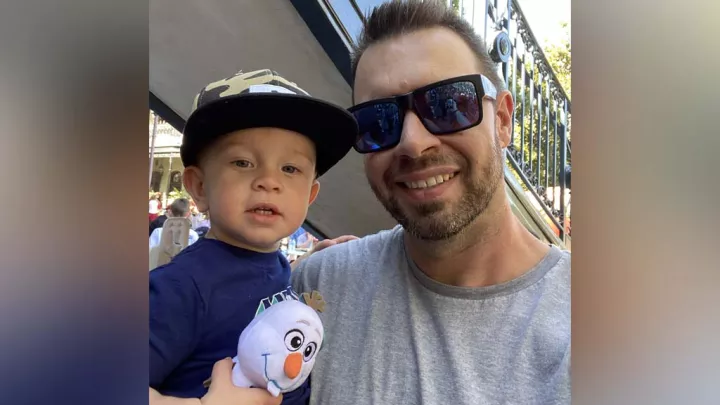
Consistency at Home Can Help Your Child
As parents, maintaining consistency at home helps you and your child in so many ways. For example, soccer practice on the same day and at the same time every week, bath time around the same hour every night, etc. As a nurse in Rehabilitative Medicine at Children’s Hospital Los Angeles, maintaining consistency is a major factor in the success of our patients, which is what inspired this blog post. I partnered with Stephanie Marcy, PhD, psychologist at Children’s Hospital Los Angeles and my colleagues to share tips on how to develop and maintain consistency at home as it relates to kids and their desire to challenge consistency and push the boundaries.
Why Kids Push the Boundaries with Parents

From the time kids are born they test boundaries, trying to stand, crawl, and eat on their own and so on. As kids get older they may argue with their parents to see if their parents’ response will be the same every time. Pushing boundaries doesn’t stop. Adults do it with loved ones, with colleagues at work and even when trying to accomplish a goal of running a marathon in under three hours. Yet, developing and maintaining consistency is good for your child and you, as a parent.
Seven Tips to Maintain Consistency at Home. (Tweet this)
These tips will help you be consistent with your child. Kids may not know it, but consistency helps them feel secure and cared for. You can start using these tips as early as today!
1. Be consistent in your answers. “Yes” means yes and “no” means no. “No” should never mean, “Let me think about it, until you convince me.” I started using this approach when I was a summer camp counselor, when I was younger and continue to use it with my two young kids.
2. Model consistency yourself. Show your own routine and schedule to your child. For example, going to the grocery store or pharmacy, on the same day each week. If you break from routine, don’t worry about hiding it from your child. It will teach them about flexibility and problem solving.
3. Have a united front with your partner. You and your child’s other parent need to have the same answer. Kids are very good at splitting and it is reassuring to them when both parents give the same answer. If you disagree with your partner, then discuss it in a polite way in front of your child. It is okay for your child to see you politely resolve disagreements. It’s a learning experience because you want them to see how to handle disagreements calmly and appropriately. If the disagreement is going to be more heated or if your child is going to blame themselves for the fact that you are arguing, do not discuss it in front of your child.
4. Do what you said you would. If you tell your child you are leaving but will be back at a certain time, be back at the time you said you would. If you can’t, call and let them know. Do not say “I’m just going to step out for a minute” or “I’ll be right back.” and then disappear for a couple of hours. Your child builds trust in you when you do what you say, and that trust is hard to earn back if you break it. It’s ok to say “I have to go to work now. I know you’re sad but we’ll see each other at [insert time]. I love you and I’m looking forward to seeing you then!” Even if they cry, they know what to expect and that is reassuring to them.
5. Set clear boundaries. Set boundaries about acceptable behavior, for example, saying “please” and “thank you.” And be clear about the consequences for unacceptable behavior. What defines both “acceptable behavior” and consequences is different for every family, so you will have to decide what those are. Once you have defined them, stick to them! In our house, we use “polite words.” I took my son to the grocery store and he got stickers from the cashier. I prompted him to use polite words, which he refused to do. I took the stickers and said, “when you say thank you, you can have the stickers.” We then left the store and once he calmed down, he said he was ready to say thank you. We went back in the store, found the cashier, and my son thanked him and he got his stickers. I think the cashier thought I was a little hard-nosed about the whole thing, but my son has politely thanked the cashier for stickers every time since then.
6. Have a schedule for your kids at home. Kids like to know what is coming next. When a child is on our rehab unit we provide a schedule every day so they know what is happening and when. If the child needs more predictability to their day, we provide them with a “set schedule” so they know day-to-day what things will happen and when. It often calms the child and the family. Have a schedule at home, even if it’s as simple as writing down the day’s activities in the order they’ll occur with no set times assigned (for example, we get up, we eat breakfast, we get ready for school, we go to school). It’s okay to not always follow the schedule because other things happen unexpectedly, like a surprise trip to grab frozen yogurt. All in all, try to be as consistent as you can be in their day.
7. Strive for consistency when you travel as a family. When you travel, it’s easy to break routine. To avoid this, try to stick to the same bed time routine, as if you were at home. This will bring a sense of comfort to your child.
Being consistent at home (and during travel) provides kids a sense of reassurance that they are cared for and loved. They know what is happening and when, and what response they can expect from their parents. This helps develop a calmer, more confident kid.


